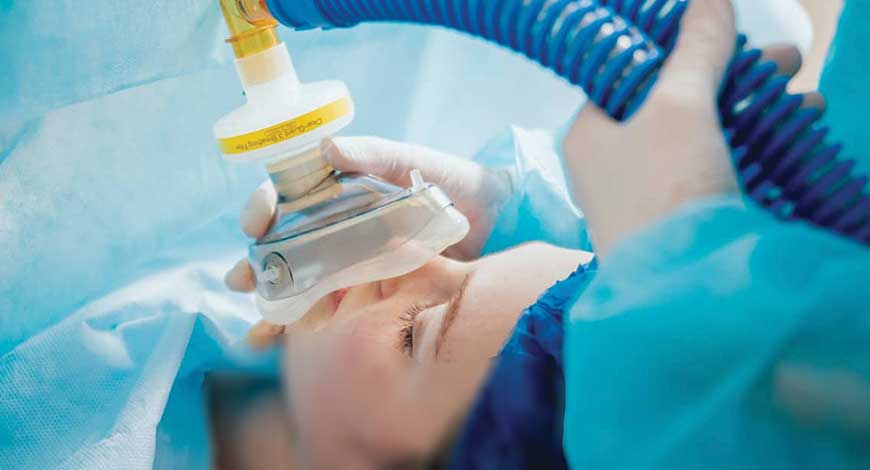
Key Takeaways:
- Understanding the key components of successful anesthesia management.
- Knowledge of the most recent advancements and technologies in the industry.
- Challenges faced by healthcare professionals within anesthesia management.
- How comprehensive management systems support efficient workflows.
Anesthesia Management in Modern Healthcare
Anesthesia management is integral to modern healthcare, optimizing how patients receive anesthesia during surgeries and medical procedures. At the heart of these advancements is the anesthesia record, a critical framework aggregating and analyzing data to maintain patient safety. This digital evolution has transformed record-keeping from cumbersome and error-prone manual processes to highly accurate, efficient systems that ensure swift decision-making.
With anesthesia management systems, hospitals and clinics can streamline operations, significantly reducing the risk of human error. These systems efficiently capture comprehensive data, enabling anesthesiologists to monitor vital statistics and make informed decisions swiftly. As a result, anesthesia management systems have become indispensable in ensuring high-quality surgical outcomes, reinforcing their role as a quintessential element of modern medical practices.
Key Components of Effective Anesthesia Management
Successful anesthesia management relies on several foundational components that work together synergistically. One such component is advanced monitoring technology, which provides real-time tracking of patient vitals during procedures. This data is pivotal in tailoring the anesthesia process to individual patient needs, ensuring optimal treatment, and minimizing risks.
Another critical component is the system’s ability to integrate with other healthcare platforms, such as electronic health records (EHR). This integration facilitates comprehensive data sharing across departments, promoting a holistic approach to patient care. Hospitals can enhance operational efficiency and maintain high safety and quality care standards by ensuring accurate and consistent information flow. Collectively, these components cement the foundation for robust anesthesia management systems, exemplifying the seamless fusion of technology and medical expertise.
Emerging Technologies in Anesthesia Management
The landscape of anesthesia management is continually evolving, bolstered by emerging technologies that offer new capabilities and insights. Adopting advanced monitoring solutions has introduced cutting-edge interfaces that allow for real-time data analytics and improved situational awareness during surgeries.
Additionally, technology such as wireless sensors and machine learning are now being integrated to enhance the precision of anesthesia administration. These developments foster an environment where healthcare professionals can react quickly to changes in a patient’s condition, ultimately driving improvements in patient outcomes. As technologies continue to mature, their integration into anesthesia management systems will redefine the operational capabilities of hospitals worldwide.
Addressing Challenges in Anesthesia Management
Despite tremendous advancements, anesthesia management still faces various challenges that require vigilant attention. These include potential equipment malfunctions, the risk of human error, and the complexities inherent in addressing diverse patient profiles. Each challenge presents a unique risk that can jeopardize patients’ safety and well-being if not appropriately managed.
Navigating these challenges requires a multi-faceted approach. Healthcare providers often employ robust systems fortified with decision-support capabilities to ensure safety and accuracy. Fostering a collaborative environment where anesthesiologists and surgical teams work closely can alleviate many common pitfalls and provide comprehensive care. By mitigating these challenges through strategic interventions, healthcare institutions can continue to safeguard patient well-being.
Automation and Its Impact on Anesthesia Workflows
Automation revolutionizes anesthetic administration by streamlining procedures and allowing medical personnel to focus on patient care. Automated systems handle once time-consuming tasks, such as data entry and monitoring thresholds, reducing the cognitive load on healthcare professionals.
However, despite these benefits, automation brings potential drawbacks. Over-reliance on automated systems may lead to diminished skill development among staff, potentially compromising patient care if systems fail. Balancing automation with the essential hands-on expertise of experienced anesthesiologists ensures that technology acts as an ally rather than a crutch. Epidural pumps with automated fail-safes, for instance, highlight how automation can assist without replacing human oversight.
The Role of Training and Education in Anesthesia Management
Training and education are pivotal in maintaining high standards within anesthesia management. Because the medical field constantly changes, healthcare workers must keep up with recent procedures and technological advancements. Continuous education empowers anesthesiologists to refine their skills and knowledge, ensuring they are prepared for any advancements or protocol changes.
Looking toward the future, the evolution of anesthesia management systems shows no signs of slowing. Forecasts predict that innovations such as artificial intelligence and computational modeling will increasingly integrate within systems, offering even greater precision and predictability in anesthesia care.
Despite these technological advancements, maintaining a patient-centered focus is paramount. Anesthesia management must continue evolving with both technological advancements and ethical considerations to ensure patient safety is always at the forefront. By striking this balance, anesthesia management systems will continue optimizing surgical outcomes and advancing healthcare boundaries.
